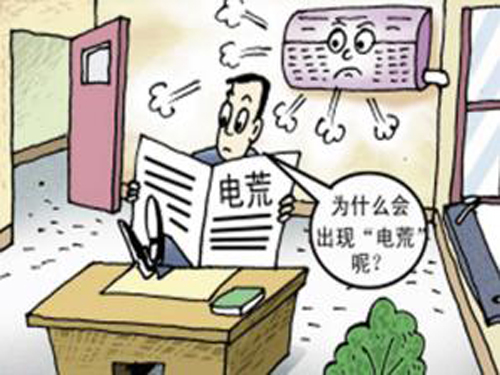 The Huazhong Power Grid Summit Summer Press Conference held two months ago has uploaded news that the power supply situation in Central China has been tense since this year. As of the end of May, the six provinces and cities have successively adopted orderly power curtailment and peak load shifting measures. The network limit allows a total of 4.07 billion kilowatt-hours of electricity.
The Huazhong Power Grid Summit Summer Press Conference held two months ago has uploaded news that the power supply situation in Central China has been tense since this year. As of the end of May, the six provinces and cities have successively adopted orderly power curtailment and peak load shifting measures. The network limit allows a total of 4.07 billion kilowatt-hours of electricity. However, a few days ago, CEC released the “Analysis and Forecast Report on the Situation of Electricity Supply and Demand and Economic Operations in the Whole Country (1H2011)â€, which stated that the national electricity supply and demand situation will be tighter in the latter part of the “Eleventh Five-Year Plan†period in 2011. The shortage of power supply and demand will be broader than last year, and the gap will be expanded. CEC expects that in the second half of the year, the electricity supply gap in most of the country will total about 30 million kilowatts.
Today, the "Beijing Morning Post" also reported that the capital suffered the largest "electricity shortage" since 2005, with a power shortage of 1.4 million kilowatts. In particular, this summer, Beijing will eliminate streetlights and landscape lighting during peak hours. The specific approach is to speed up the energy-saving transformation of street lighting; formulate a landscape lighting reduction plan during the summer; during the peak hours of electricity use, the municipal organs, public institutions, and state-owned enterprises will shut down the landscape lighting.
At the same time, other provinces and cities have also entered the "electricity shortage" peak period. The electricity gap in Hunan and Jiangxi continues to expand, and the electricity gap in Hunan Province is now about 4 million kilowatts. In Jiangxi, the electricity gap is about 100 to 1.5 million kilowatts in June, while the electricity gap in East China is not enough. In mid-July, it was about 1,000 to 15 million kilowatts. When entering the peak period of electricity consumption, this gap will surely continue to expand.
Through successive figures, ordinary people can feel the tension in this year's supply and demand situation. However, when many companies are embarrassed to cope with the “electricity shortageâ€, many companies are able to seize the opportunity to catch the concept of “energy service†and bring new opportunities for themselves.
For example, some enterprises in Changzhou have an average energy saving space of 15% after investing a small amount of energy-saving reforms. Among them, the Zhuorun Wind Energy can set the economic operating range of the equipment, and the average monthly electricity cost is reduced from 1 million yuan to 700,000 yuan; Longtai Foundry implements the energy use system, which evaluates the time and shift cost, and the unit energy consumption is reduced by 20 %; Southeast printing and dyeing through voltage optimization, harmonic control and other measures, while saving 7%, but also greatly reduces the risk of production accidents. In addition, Zhejiang Shamcon Group, a traditional kitchen and bathroom company, recently held a press conference on "photothermal, photovoltaic power generation and building integration" in its newly completed staff dormitory "Sunshine Apartments", and announced that it has officially entered the field of solar energy and building integration.
Electricity curtailment is currently mainly concentrated in East China, Central China, and South China. The major impacts are mainly the start-up of PVC companies and the start-up of downstream products and other companies. The negative impact is relatively large. The PVC market is sluggish, and the demand is not good. The transaction is difficult to improve, the price is difficult to rise, and it is difficult to increase the starting price. The calcium carbide market is difficult to see the hope of improvement. However, the warming up of energy-saving concepts has begun to drive the development of new energy markets. The market reshuffled, opportunities and risks have been walking side by side.
Champagne Flutes,Dish Co., Ltd. , http://www.nsdinnersets.com